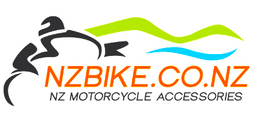Safety has always been paramount for motorcyclists on New Zealand roads, and with the advent of technology, we're constantly finding new ways to stay connected. The rise of Bluetooth motorcycle helmets in the market presents a unique challenge and opportunity for Kiwi riders. In this article, we delve into the safety aspect of these innovative helmets, examining their benefits, potential drawbacks, and their impact on communication, music, and navigation during rides. It's essential for Kiwi riders to make informed choices that prioritize safety.
The Safety Aspect:
Bluetooth motorcycle helmets may be legally available, but the million-dollar question is whether they are genuinely safe. Currently, there isn't enough conclusive evidence to label them as entirely safe or potentially risky.
This uncertainty arises from the relatively short time these helmets have been on the market, making it challenging to gather substantial safety data. For Kiwi riders, distraction is a major concern. Distracted driving is a common issue on our roads, often attributed to cellphone use. Staying defensively alert is crucial for motorcyclists.
A study reveals that motorists using hands-free devices are only aware of half of their surroundings, potentially leading to dangers being overlooked. Whether it's hands-free calling or listening to podcasts, these activities have been shown to impact driving performance, especially for complex tasks.
Helmet Safety Standards:
On the road, accidents can happen when least expected. Your helmet plays a crucial role in such situations. The law mandates that all riders wear approved safety helmets. These helmets bear a sticker indicating compliance with safety standards like DOT, ECE, or Snell.
Selecting the right helmet is just the beginning. It must fit your head snugly, without being too tight or loose. While riding, ensure it's securely fastened, opt for a brightly colored helmet, and add reflective tape to the back and sides for increased visibility.
Kiwi riders must be aware that helmet damage compromises safety. Cracks, loose padding, exposed metal, worn-out straps, and any other form of damage are clear signs for replacement. Second-hand helmets, which may hide hidden damage, are best avoided.
Bluetooth Helmet vs. Intercom Mounting System:
Can you equip a motorcycle helmet with Bluetooth capabilities? The answer is yes, thanks to the Intercom Mounting System (IMS), which also utilizes Bluetooth technology.
While an IMS offers flexibility by attaching to any helmet, it's comparatively more complex when it comes to installation. A Bluetooth helmet, on the other hand, boasts simpler control mechanics.
IMS solutions, including wired systems for rider-passenger communication, prove less efficient for group riding. Kiwi riders might wonder which helmets are Bluetooth-enabled, and the answer lies in our high-quality and secure helmet collection.
Benefits and Drawbacks of Bluetooth Helmets:
Communication: A Bluetooth motorcycle helmet facilitates communication with your passenger and fellow riders. For Kiwi riders, this means the ability to provide clear instructions, ensuring a safer and more relaxed ride.
Group riding also benefits from the seamless communication offered by Bluetooth helmets. Planning stops, coordinating routes, and sharing vital information becomes easier.
However, Kiwi riders should be aware of potential volume and signal issues. Noise filtering technology integrated into some Bluetooth helmets can dampen human voices, affecting communication at higher speeds. Signal interruptions can occur on winding roads, prompting riders to rely more on hand signals.
Music: Long rides might leave Kiwi riders craving their favorite tunes. Bluetooth helmets eliminate the need for earbuds or helmet speakers, enabling riders to stream music. This hands-free approach ensures the focus remains on the road.
Yet, it's essential to remember that excessive music volume can become a distraction. Riders should maintain awareness of their surroundings and critical auditory cues.
Navigation: Navigation is invaluable for long trips and unfamiliar routes. A Bluetooth helmet allows riders to receive navigational prompts from their smartphones without interrupting the ride. This feature helps avoid traffic, roadwork delays, and other obstacles.
As Kiwi riders, we understand the need for safety. Embracing technology is a part of our journey, and when used responsibly, Bluetooth helmets can provide a safer, more connected experience.
For more informative reads, explore the following topics:
- Is It Legal to Wear Earbuds While Riding a Motorcycle?
- How to Listen to Music with a Motorcycle Helmet
- Are MIPS Bike Helmets Safer?
- Are Open-Face Motorcycle Helmets Safe
- Best and Safest Motorcycle Helmet
- How to Choose a Motorcycle Helmet?
- How Long Do Motorcycle Helmets Last
- How to Check Motorcycle Helmet Expiry Date
- Highest Motorcycle Helmet Standard
- Best Motorcycle Helmet
- Most Advanced Motorcycle Helmets

